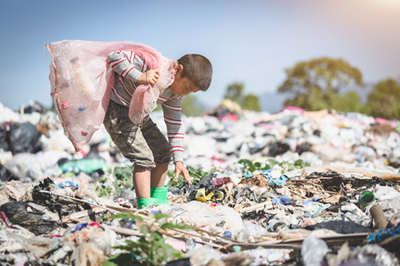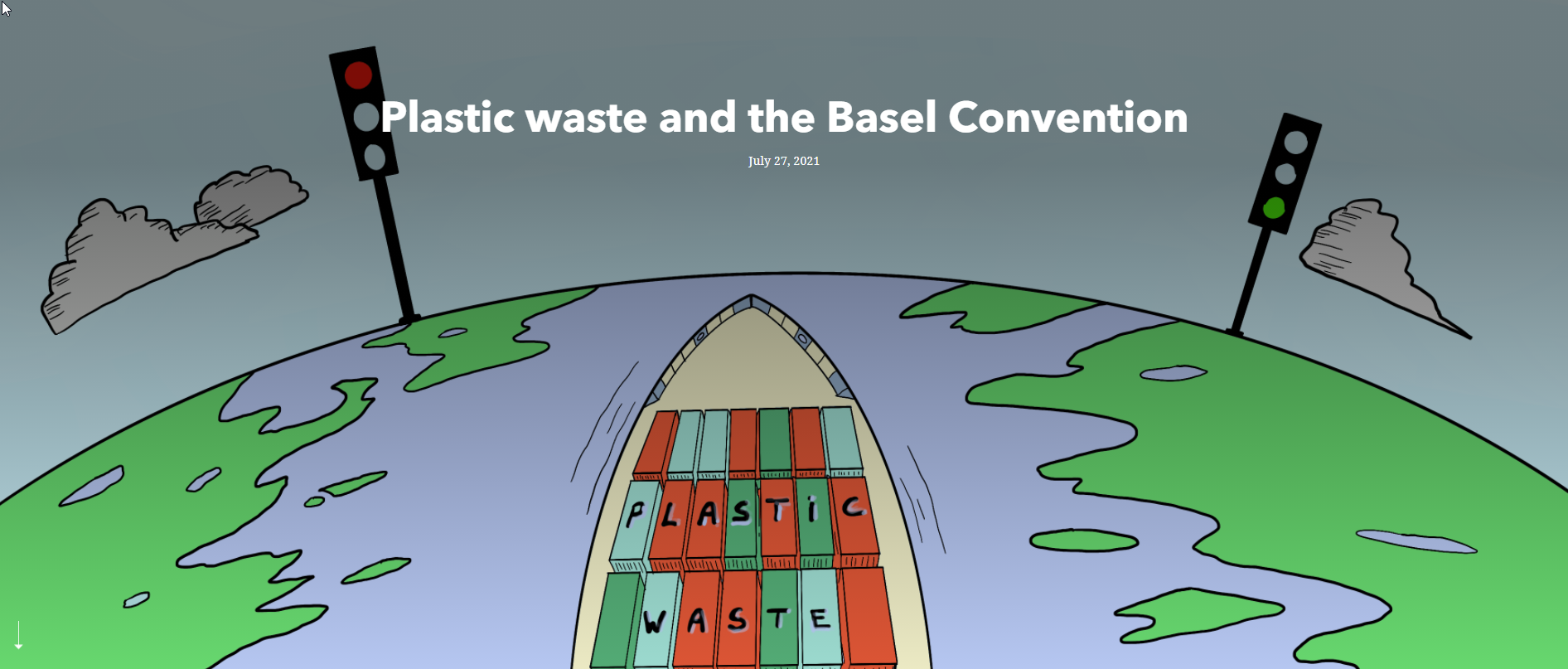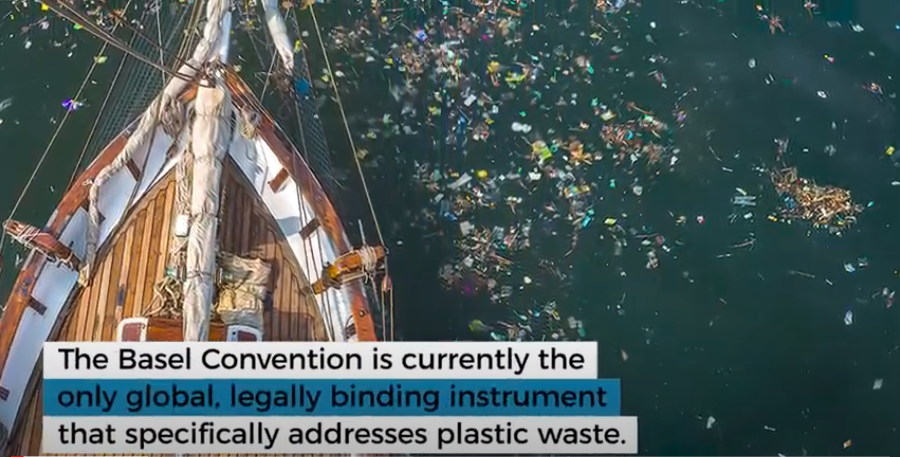 |
Rapidly increasing levels of plastic waste pose a serious global environmental problem. Plastic pollution can arise at all stages of the life-cycle and may pose a threat to human health and the environment. In 2019, the Conference of the Parties to the Basel Convention adopted two important
decisions to address plastic waste. These steps have strengthened the Basel Convention as the only global legally binding instrument to specifically address plastic waste. Technical assistance is provided to assist Parties in fulfilling their obligations, including in relation to plastic waste.
|
Dive into the new story map on ‘Plastic waste and the Basel Convention’, featuring dynamic data visualization, videos and infographics, to find out more about the role of the Basel Convention Plastic Waste Amendments in controlling transboundary movements, advancing environmentally sound management, and promoting prevention and minimization of the generation of plastic waste.
|
 |
Explore the role of the Basel Convention – currently the only global, legally binding instrument that specifically addresses plastic waste - in addressing plastic pollution. In 2019, the Conference of the Parties adopted the Plastic Waste Amendments, clarifying which types of plastic waste are subject to the control procedure for exports, transit and imports.
|
 |
Actions for addressing plastic waste under the Basel Convention
In May 2019, the Conference of the Parties to the Basel Convention adopted decision BC-14/12 by which it amended Annexes II, VIII and IX to the Convention in relation to plastic waste. Information on the Basel Convention Plastic Waste Amendments can be found here.
In addition, the Conference of the Parties adopted decision BC-14/13 on further actions to address plastic waste under the Basel Convention. The decision includes in its sections I, II, III and VII a set of actions for preventing and minimizing the generation of plastic waste, improving its environmentally sound management and controlling its transboundary movement; reducing the risk from hazardous constituents in plastic waste; and public awareness, education and information exchange.
In section IV of the decision (Review of Annexes I and III), the Conference of the Parties requested the expert working group on the review of Annexes I, III and IV and related aspects of Annexes VIII and IX to consider, as part of its mandate, whether any additional constituents or characteristics in relation to plastic waste should be added to Annex I or III, respectively, to the Convention.
In section V of the decision (Technical guidelines), the Conference of the Parties decided to update the 2002 technical guidelines for the Identification and Environmentally Sound Management of Plastic Wastes and for their Disposal.
In section VI of the decision (Basel Convention partnership on plastic waste), the Conference of the Parties welcomed the proposal to establish a Basel Convention partnership on plastic waste and decided to establish a working group of the Partnership. The goal of the Partnership is to improve and promote the environmentally sound management of plastic wastes at the global, regional and national levels and prevent and minimize their generation so as to, among other things, reduce significantly and in the long-term eliminate the discharge of plastic waste and microplastics into the environment, in particular the marine environment.
In section VIII of the decision (Further consideration), the Conference of the Parties decided to include in the work programme of the Open-ended Working Group for 2020-2021 the consideration of whether, how and when the Conference of the Parties should assess the effectiveness of the measures taken under the Convention to address the plastic waste contributing to marine plastic litter and microplastics; and which further activities could possibly be conducted under the Convention in response to developments in scientific knowledge and environmental information related to plastic waste as a source of land pollution, marine plastic litter and microplastics. The Conference of the Parties also invited Parties and others to submit information on plastic waste almost exclusively consisting of one cured resin or condensation product and plastic waste almost exclusively consisting of one of the listed fluorinated polymer wastes, for consideration at its fifteenth meeting.
Furthermore, the Conference of the Parties adopted other decisions specifically addressing plastic wastes: Decisions BC-14/9 on cooperation with the World Customs Organization on the Harmonized Commodity Description and Coding System, BC-14/10 on national reporting, BC-14/18 on technical assistance, BC-14/19 on the Basel Convention Partnership Programme, BC-14/21 on international cooperation and coordination, and BC-14/23 on the clearing house mechanism for information exchange.
Plastic waste comes in many forms
Plastics are extremely durable, making the ubiquitous transboundary movement of plastic waste a major concern. The majority of polymers manufactured today is likely to persist for decades and probably for centuries, if not millennia.
Larger pieces of plastics accumulate, for example, on beaches or sink to the ocean floor. These can cause harm directly to marine animals, for example by entanglement in debris. Many species of birds ingest smaller pieces of plastics. Other plastic waste is carried on ocean currents and can accumulate in ocean gyres. Under the influence of sunshine and saltwater, larger pieces can break into microplastics. Microplastics are now widely distributed through the oceans and they can be vectors for pollutants and pathogens. For more information, see the GESAMP report.
In addition to polymers, additives such as flame retardants, and plasticizers are mixed into synthetic materials to increase their flexibility, transparency, durability, and longevity. Some of these substances are persistent organic pollutants (POPs) listed under the Stockholm Convention on Persistent Organic Pollutants.
A variety of international and regional instruments and approaches exist to protect biodiversity, manage hazardous chemicals and wastes, and prevent pollution of the marine environment from ocean-based and land-based sources of pollution. The cooperation among those initiatives and activities is key to effectively addressing this global environmental challenge.
Strengthening waste management systems and tackling plastic waste at source
Plastic pollution can arise at all stages of the life-cycle, from production, to use and final disposal. The greatest burden of plastic waste entering the sea is likely to arise where waste collection and management systems are ineffective. Developing countries in particular may face challenges in managing the rapidly growing volume of plastic wastes for instance if they have insufficient capacity to dispose of them in an environmentally sound manner. This may lead to the dumping of plastic wastes on land or in waters, and to the need to rely on the continued availability of recycling or other disposal capacity in other states.
Meanwhile, the plastic waste challenge also needs to be tackled at source. Steps promoting the prevention and minimization of the generation of plastic waste, where technically and economically feasible, are critical.
Several guidance , guidelines, manuals, methodologies and strategies have been developed under the Basel Convention to assist Parties and others to implement the Basel Convention.
In line with the mandate set out in paragraph 1 of Article 16 of the Convention and decision BC-14/18 on technical assistance, technical assistance and capacity-building activities to implement the Basel Convention including for plastic waste are carried out.